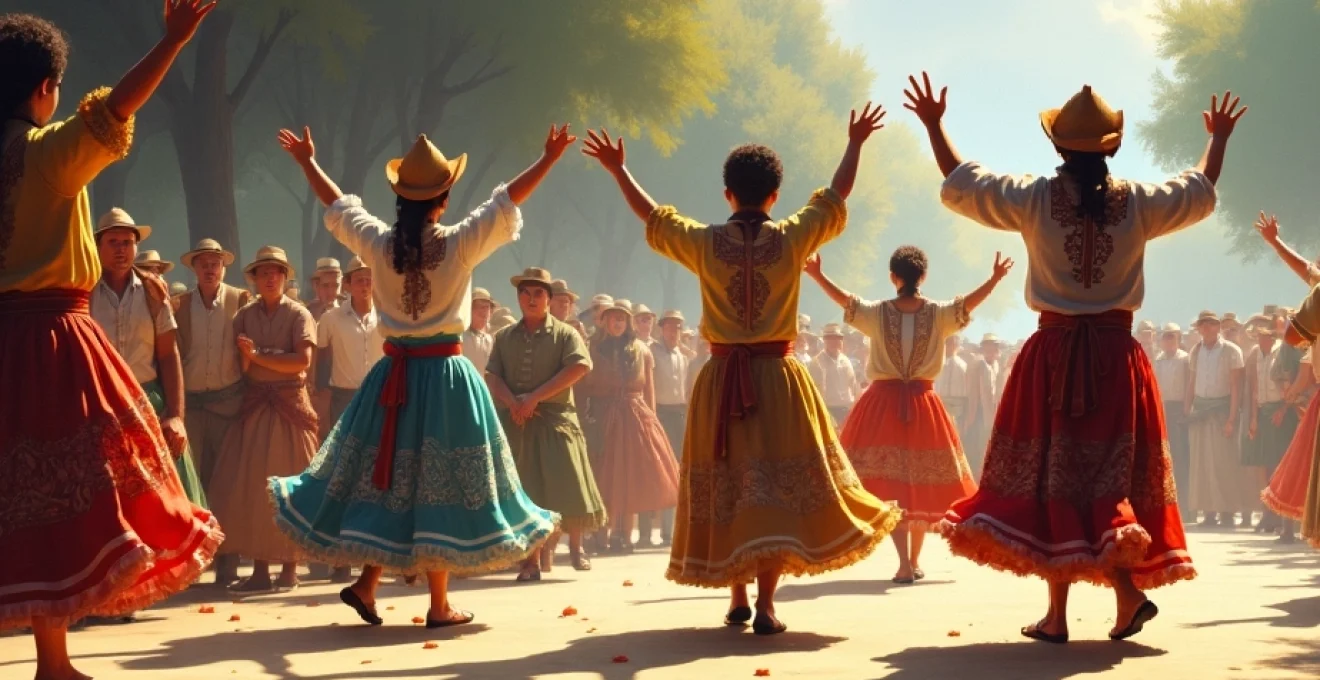
Folk dance represents one of humanity’s most enduring forms of cultural expression, evolving from ancient spiritual rituals to sophisticated performance art. This remarkable transformation spans millennia, reflecting the changing social, religious, and artistic needs of communities worldwide. Through movement and rhythm, folk dance has preserved cultural memories, strengthened social bonds, and provided a powerful medium for storytelling across generations.
Origins and ritualistic foundations of folk dance (3000 BCE – 1500 CE)
Ancient agricultural rituals: the fertility dances of Mesopotamia
In ancient Mesopotamia, agricultural communities developed intricate dance rituals to ensure bountiful harvests. These fertility dances combined rhythmic stomping, circular formations, and symbolic gestures that mimicked the planting and growing of crops. Archaeological evidence suggests these performances occurred during critical agricultural phases, with dancers wearing masks and costumes representing natural forces.
Dance served as a bridge between the physical and spiritual realms, allowing communities to communicate their hopes and fears to divine forces that governed their agricultural success.
Shamanic dance traditions in Native American ghost dances
Native American ghost dances exemplified the profound spiritual dimension of early folk dance traditions. Shamanic practitioners utilized specific movement patterns called sacred circuits to induce trance states and facilitate communication with ancestral spirits. These dances often lasted several days, incorporating complex footwork patterns and ritualistic gestures passed down through generations.
Medieval European circle dances and ecclesiastical influence
During the medieval period, European folk dance underwent significant transformation as Christian authorities sought to integrate pagan dance traditions into religious practice. The emergence of circle dances, particularly the carole, represented this fusion of sacred and secular elements. Dancers joined hands in circular formations, moving clockwise to symbolize cosmic harmony and Christian unity.
Ethnochoreological classification of folk dance movements
Labanotation system in traditional dance documentation
The development of Labanotation in the early 20th century revolutionized folk dance preservation. This scientific system of movement notation, using kinetography, enables precise documentation of dance patterns, spatial relationships, and rhythmic structures. Modern ethnochoreologists employ this system to analyze and compare folk dance traditions across cultures. The table below provides more detailed information:
| Movement Type | Notation Symbol | Cultural Context |
|---|---|---|
| Circle Step | ⭕ | Community Bonding |
| Stamp Pattern | ▼ | Earth Connection |
| Leap Sequence | ↑ | Spiritual Elevation |
Hungarian researcher György Martin’s movement analysis method
György Martin’s systematic approach to folk dance analysis established movement motifs as fundamental units of dance structure. His method identifies recurring patterns and variations within traditional dances, revealing the complex relationship between individual expression and communal tradition.
Regional folk dance transformations and cultural exchange
Folk dance evolution reflects centuries of cultural interchange and adaptation. As communities migrated and traded, dance forms merged and transformed, creating new hybrid styles that retained elements of their original ritualistic functions while incorporating novel movements and meanings.
- Integration of regional music traditions
- Adaptation of costume elements
- Evolution of spatial patterns
- Development of couple formations
Contemporary folk dance in professional performance
Moiseyev dance company’s theatrical adaptations
The Moiseyev Dance Company pioneered the transformation of traditional folk dance into professional stage performance. Their innovative approach combines authentic folk elements with theatrical presentation techniques, creating spectacular productions that preserve cultural authenticity while engaging modern audiences.
Riverdance’s impact on Irish step dancing
Riverdance revolutionized the presentation of traditional Irish dance, introducing dramatic staging and contemporary choreographic elements while maintaining the core steps of the tradition. This transformation demonstrates how folk dance can evolve while preserving its essential character.
The successful adaptation of folk dance to professional performance requires a delicate balance between preserving authenticity and meeting contemporary audience expectations.
Folk dance preservation and digital documentation methods
UNESCO intangible cultural heritage documentation standards
Modern preservation efforts utilize sophisticated digital tools to document and safeguard folk dance traditions. UNESCO’s comprehensive documentation standards ensure that both physical movements and cultural context are preserved for future generations.
- Video documentation of complete dance sequences
- Audio recording of traditional music accompaniment
- Collection of oral histories and cultural context
- Digital archiving of costume and prop details
Machine learning applications in movement pattern recognition
Advanced technology now enables the analysis of folk dance movements using artificial intelligence. Machine learning algorithms can identify and categorize movement patterns, helping researchers understand the evolution and relationships between different dance traditions.
Community-based archive projects and digital repositories
Local communities increasingly participate in digital preservation efforts, contributing to online repositories that document their dance heritage. These collaborative projects combine traditional knowledge with modern documentation methods, ensuring that folk dance traditions remain vibrant and accessible for future study and practice.